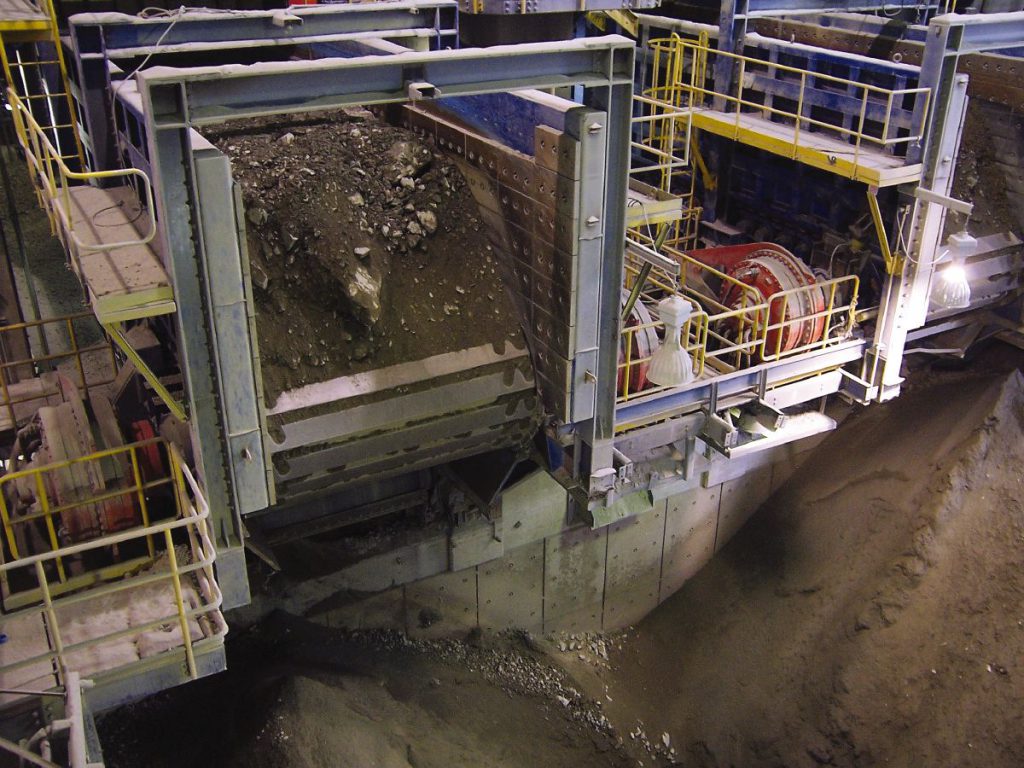
So you have your apron feeder basics covered, it has been properly sized and selected, but now what? You need to make sure that your apron feeder is installed correctly and then make sure that you are able to maintain optimal performance with proper management.
“Tractor chain” style apron feeders are proven to be robust, which will produce benefits such as minimal wear and low maintenance. But does a “tractor chain” style apron feeder require regular lubrication? No because the modern-day design is nearly 100% sealed for life lubricated
The only locations on the “tractor chain” style apron feeder that require any lubrication are the two pillow block bearings located on the head shaft. These bearings only require semi-regular grease lubrication. With eliminating the need for an automatic-lubricating system the tractor chain style apron feeder reduces operating costs (OPEX).
When design a sub-structure for an apron feeder there are certain factors that must be considered. First, there are three types of loads: Dead load, live load operating, and live load start up. Every application’s results will cause different degrees of value for each load type.
Dead loads correspond to the self-weight of the apron feeder and any other hardware such as skirts, hoppers and chutes that may tie into the feeder frame. Live loads link to the dynamic loads caused by the material shear and torque being transmitted from the drive system (while operating and at the start up).
Live load operating condition is the normal dynamic load at 100% design capacity of the apron feeder. Live load start up conditions are the maximum dynamic load when the apron feeder is fully loaded at start up considering full motor nameplate torque plus a full start up factor of the motor.
Apron feeders are built to be robust. They must be able to feed and extract under rough conditions and that includes how the material is fed onto the feeders. Impact rails under the pans are in place to make sure the apron feeder can properly feed the materials with less downtime for maintenance. Yet, there is always a recommendation of always maintaining a bed of material on the feed end of the apron feeder during loading of a hopper, stockpile or bin.
The reason to have a continuous “bed” of material on the feeder is to soften the impact of the material that is loading onto the feeder. That way wear is reduced, and no permanent damage is done due to large materials falling on the feeder. In fact, it is a good practice to leave a bed of material in the hopper at the end of a shift or operating cycle of the apron feeder for the next day…
Read the entire article on metso.com: Feeding the facts 3/3: Apron feeder installation and management.
Comments